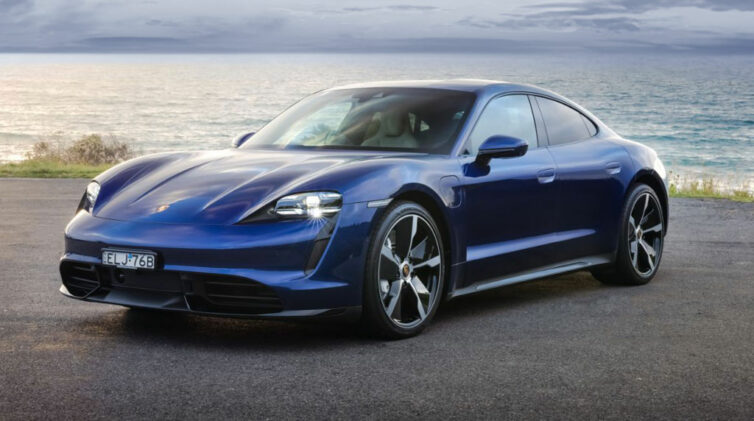At the core of the confusion and divergent regulations proposed by individual states is a federal government that appears to have adopted a wait-and-see attitude to EV policy.
The national body that promotes electric vehicles (EVs) and the EV industry, the Electric Vehicle Council (EVC), said the conflicting policies of the states are not helping to reduce vehicle emissions in the long run.
EVC CEO Behyad Jafari told GoAutoNews Premium that many of the policies now promoted by individual states were made in the absence of a central policy from the federal government, which he said should have had a plan in place “more than a decade ago”.
“For some time now, we, like the states, have been tired of waiting for the federal government to get their act together,” he said.
“It appears the federal government has no interest in a policy. So while it’s less helpful to have a state-by-state policy basis than a federal one, at least we are seeing some positive policies like those in NSW.

Behyad Jafari
“What NSW is doing is really supplanting the federal government.”
The Australian Automotive Dealers Association CEO James Voortman said it was “incredibly disappointing that we cannot have a national approach for EVs”.
“We are seeing a patchwork approach to EVs in Australia as state governments bring forward different ideas on issues such as incentives, stamp duty and even road user charging,” he said.
“I’m not sure that having eight different approaches to EVs will benefit consumers, businesses or the environment.
“We really should be able to establish a common framework for taxing and incentivising our cars in Australia, including EVs.”
Mr Voortman said that from a dealer perspective, selling EVs across Australia now needs them to deal with different rates of duty.
“Some are able to offer incentives while others are not,” he said.
“We will no doubt see different approaches to administering incentives and divergence in both rates of road-user charging and the range of technologies used to calculate road user charges.”
Mr Jafari said that the EVC’s conversation with Canberra on the need for an EV policy had been “a roller coaster of peaks and troughs of enthusiasm”.
“The big concern in not having a national plan is that Australia as a whole needs to move forward on this issue,” he said.
“Corporations and businesses are looking at national plans to make their investments and visions, and states can fill that role when it comes to a vehicle fleet. But it’s much more useful when it’s a national thing.

James Voortman
“If you’re a business investing around the world, you want to ask ‘Why isn’t there a national plan for your entire market?”
Mr Jafari said that an additional concern was the effect this varying EV policy has on OEMs.
“It is difficult when Australia doesn’t have a policy and all other markets do,” he said.
“So it’s very hard for Australia, as a vehicle market, to make the case to the global head office of an EV manufacturer for vehicles when everybody else has a great national plan and we don’t. That makes life hard.
“More recent moves such as the NSW government’s policies are helpful. It means that we can actually go and say that the largest state is doing something.
“That gives us a good grounding. The next step for us is trying to get the rest of the country to follow their lead, so out of this comes a bit of positive news.”
WHAT EACH STATE AND TERRITORY PLANS
Federal
- Future Fuels Fund has made $16.5m available to finance a fast-charge network. This is in addition to a $21m investment in public charging networks through ARENA and the CEFC.
- Holding a two-year EV trial for government fleet business Comcar.
- Green Fund alliance to aid in building EVs in Australia, specifically SEA Electric trucks.
- No road user charge (RUC) for EVs proposed at this time.
ACT
- RUCs being considered.
- Transport Canberra bus fleet to be 100% zero emissions by 2040.
- No stamp duty on new zero-emissions vehicles.
- Two years of free vehicle registration for new zero-emissions vehicles.
- Promising zero-interest loans of up to $15,000 for households (proposed by Labor-Greens agreement).
- All newly leased fleet cars will have zero emissions in 2020-21.
- Multi-residential and commercial buildings to be EV ready.
- Commitment to build at least 50 EV charging stations in 2021-22.
NSW
- Road user charges to be introduced from July 1, 2027 or when EVs comprise 30% of new-car sales. RUC is set at 2.5c/km for BEVs and 2c/km for PHEVs.
- Rebates of $3000 for the first 25,000 EVs sold for under $68,750 from Sept 1, 2021.
- Plan to increase EV sales to 52% by 2030-31 with majority of new-car sales being EVs by 2035.
- Phase out stamp duty for EVs sold for less than $78,000 (inc. GST) from Sept, 2021.
- Low-emissions light vehicles receive a maximum $30 discount on registration.
- Government passenger-car fleets to be 50% EVs by 2026, 100% by 2030.
- Fully electric bus fleet by 2030. This year, 50 EV buses will be on the roads.
- No levy until EVs make up 40-50% of new-vehicle sales
- Proposed access to T2 and T3 transit lanes
- $171m investment over next four years in charging sites, including $131m for ultra-fast charging for commuter corridors; $20m for regional areas to develop charging stations; and $20m for charging at regional tourist locations.
- EV readiness building requirements proposed to support amendments to the National Construction Code, NSW Building Sustainability Index and state environmental planning policies.
Victoria
- Road user charges of 2.5 cents/km for zero-emissions cars and 2 cents/km for plug-in hybrid cars started on 1 July.
- Trialling one electric bus over 3 years. New public transport buses to be zero-emissions from 2025
- $5m for zero-emission commercial vehicles uptake
- $298,000 for an ‘EV readiness’ study for new buildings
- EV tax incentive study for 20,000 subsidies of up to $3,000 for EVs cheaper than $69,000.
- $100 registration discount for EV owners.
- Exemption for state ‘super luxury tax’ on EVs
- $22.7m for EV charging network
- 50% target for new EV sales by 2030.
- $10m for 400 EVs for government fleets by 2023.
Queensland
- Rules out introducing RUCs at this time
- EVs in the lowest band for registration (saving about $70) and stamp duty (saving from about $600).
- Doubling the number of EVs (inc BEVs and PHEVs) in government fleets every four years.
- Encourage agencies to replace existing ICE vehicles with PHEVs through subsidised leasing lease rates while increasing rates on higher-emission vehicles.
- Funded 31 fast-charging sites in 2017; another $2.5m for 13 stations in 2020; a further $2.75m for another 18 chargers in regional or inland areas.
South Australia
- Promised a road-user charge but has delayed it a year. Labor opposition intends to block it.
- Plans for an EV bus grid integration strategy.
- Government fleet cars must be replaced by EVs where possible. Aim to be fully EVs by 2030.
- Smart charging infrastructure for government buildings.
- $13.4m for public charging network including 110 rapid highway chargers, 350 fast destination chargers in major metro centres and 100 destination chargers across Adelaide.
Tasmania
- RUCs not proposed at this time.
- Zero-emission bus trials over the next two years.
- Waive stamp duty for EVs proposed for next two years.
- Registration costs waived for EVs bought by rental firms and coach operators for two years.
- $1000 grant to EV owners who rent out their cars to approved car share programs (until Dec 24, 2021)
- Target of 100% electric government fleet by 2030.
- $600,000 for a fast-charging network of 14 fast chargers and 23 workplace and destination chargers (follows $600,000 previously allocated for EV chargers).
Western Australia
- RUCs not planned at this time.
- Currently trialling four BEV buses.
- EV readiness strategy for public buildings.
- Minimum 25% EV target for government fleets by 2026.
- $800,000 for charging stations in government buildings.
- $80,000 to host fleet events.
- Up to $20m for creation of a charging network.
Northern Territory
- RUCs not planned at this time.
- EVs charged in the ‘small car’ (sub-1000cc) category for registration ($665.55 a year).
Source: Electric Vehicle Council
By Neil Dowling












 Read More: Related articles
Read More: Related articles

